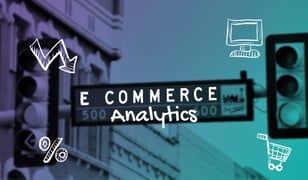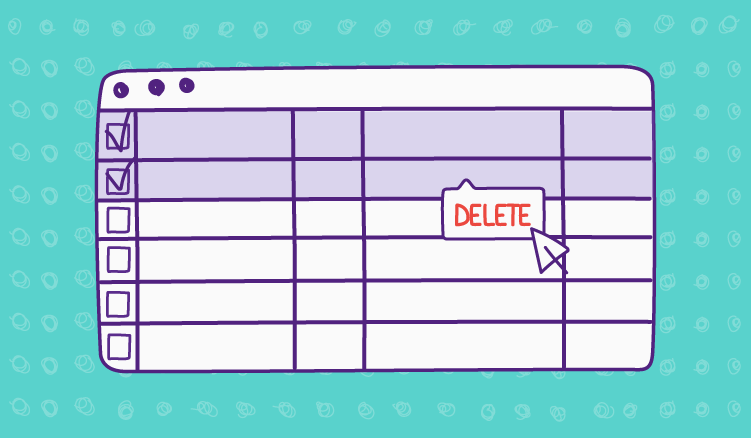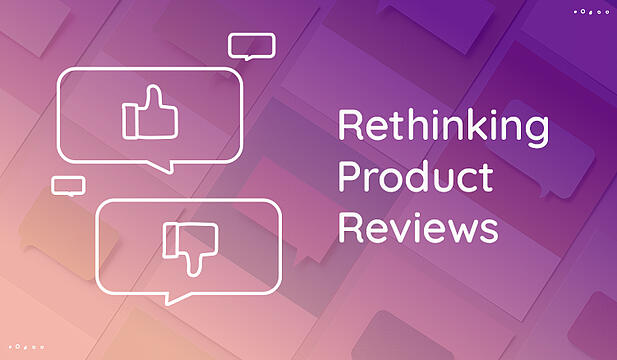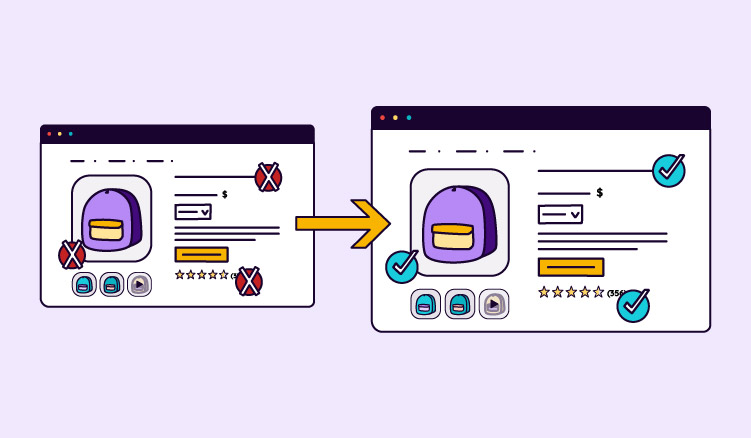If you've had an online business for a while, you know that running a successful ecommerce business isn't stress-free. You have to make decisions about your products, customer experience, marketing, and advertising strategies, and more. Many times, those decisions are even based on gut instinct.
But your decisions don't need to come down to guesswork. Instead, you can leverage the data you already sit on to make better decisions, faster. Ecommerce analytics can be the key to understanding data that can help you spot gaps, show you what's working or help predict future trends.
What Is Ecommerce Analytics?
Ecommerce analytics is the systematic collection and analysis of data points that relate to your sales and product performance online. These data points, when analyzed together over time, help you understand your customers' behavior and how you can optimize your points of sale. In the world of analytics, these data points are also referred to as "metrics" when they are used to measure success. When these metrics are hand-selected to make up a set of important signs of your own success, we call these Key Performance Indicators, or KPIs.
The data gathered can cover the full customer experience, from the moment a new customer discovers your brand, to which products they explore, to when they add to cart, make a purchase, and even recommend your brand to others. With ecommerce analytics, you can leverage data about all the different points along the customer journey, tracking KPIs to create a full picture of how people interact with your brand. With this understanding, you can connect to their wants and needs — which will always be a driver of success.
The first step on your analytics journey is to simply start collecting data. The more data, the more clear the picture becomes. Let's explore some tools to help you get started.
What Are The Best Ecommerce Analytics Tools?
There's a lot of information gathered on the web; in fact, it's believed Facebook has 52,000 data points about each of its users. Gathering all that data either requires a solid development team, or a good set of tools.
Your Ecommerce Platform
Most ecommerce platforms like Shopify and BigCommerce have built-in analytics tools already.
Here is an example dashboard from Bigcommerce:
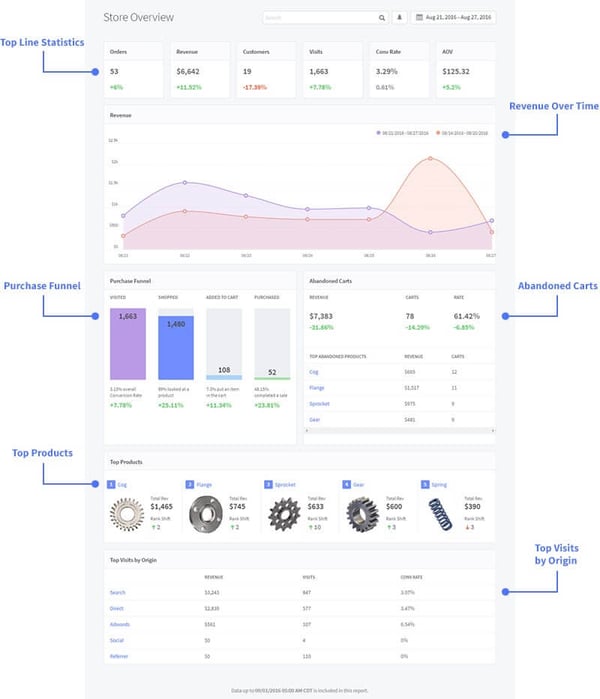
These built-in dashboards are often a great place to start because they usually have been collecting data since the moment you activated your store.
Google Analytics
Google Analytics is one of the most-used analytics services on the web and, guess what, it’s free! Through Google Analytics you can access a lot of data insights that you can use for optimizing your marketing campaigns and even your website’s design. Some of the data that you can get from it include:
- Where the users come from, whether that’s organic searches, PPC, or links on social media or other websites.
- Cost per lead (CPL), which can help you determine the cost of generating new customer leads by analyzing the cost of the campaign and the number of leads it generated.
Google Enhanced Ecommerce
While standard Google Analytics offers information collected in the discovery and consideration phases for your website in general, their Enhanced Ecommerce plugin provides information from the entire customer journey, giving you extra insights into marketing initiatives and more importantly product performance.
Conversion data from Google Enhanced Ecommerce helps paint a picture of how and when visitors become customers. Analyzing conversion data can help brands:
- Track and optimize users' online shopping experience
- Visualize the checkout funnel
- Maximize profit per visitor
- Determine their best-converting channel(s)
This kind of analytics can help create marketing strategies and add improvements to the customer experience to boost conversion rates, turning more browsers into buyers. Some of the key metrics to watch for in this category include:
- Sales conversion rate, which is the percentage of visitors who make a purchase. Analyzing this metric can help identify problems with the customer experience — if conversion rates are low, there’s likely a reason why.
- Average order value (AOV), which is the average amount of money spent by each customer.
- Cart abandonment rate, or the percentage of shoppers who add items to their cart and then leave the site without purchasing.
Most of these metrics can help brands identify problems with their sales funnel. For example, say your cart abandonment rate is high. This could indicate that there’s something users don’t like about your checkout process, like if they have to navigate multiple screens to complete checkout. You can then create a more seamless experience by implementing a single-page checkout and watch your cart abandonment rates to see if they go down.
Customer-focused Analytics Tools
On top of your store data and your website data, you can also deep dive into your customers. There are tools like Glew.io and Kissmetrics that help you see how individual customers interact with your products. This is valuable information that will help you personalize your marketing efforts.
And more…
There are so many tools out there to help you track and understand your ecommerce performance. It truly comes down to what problems you want to solve and what data you need to solve those problems.
Check out these lists of retail intelligence tools and conversion rate optimization software to pick the right ones for you.
How to Choose Your Ecommerce Analytics Software
Google Analytics can take you a long way when you start analyzing your ecommerce data, but as your business grows, you may need specialized analytical tools. Ecommerce analytics software lets you broaden your approach and fill needs specific to your business.
If you need to understand how your products are performing across your web store as well as your resellers' listings, tools like Plytix PIM can help pull product data and metrics into one centralized location. Whatever software you choose, these steps can help find a product that fits your brand’s analytics needs.
1. Define Your Goals and Needed Software Features
When you're looking for new analytics software, start by defining what you need. Different programs are better at tracking different metrics, while some may not cover what you need. Some of the metrics to think about include:
- Inventory management.
- Exit pages.
- Funnel performance.
- Customer journey.
- Customer behavior.
2. Do Your Research and Read Reviews
Research what's currently on the market. Industry reviews can give you helpful information about the different programs available, including prices, ease of use, and the data and reports provided. You can also read individual reviews on the programs to see what fellow business owners think or talk to other people in ecommerce to see what they use and recommend.
3. Do a Test Run
Make sure that you can have a trial run or use a demonstration to see how the program works before purchasing. While testing it, make sure that it offers all the data and reports you need. You should also determine if the company offers integration support and has data blending capabilities, meaning you can bring in data from multiple sources.
Ensure that the interface is easy to use, the dashboard is robust, and that there are good data visualization capabilities so that you can easily see the insights that are important to your business. Lastly, make sure the program is scalable so that it can grow with your business.
How You Can Use Ecommerce Analytics
We’ve touched on some examples of ecommerce analytics being turned into insights into business strategy above, but let’s look at a few more common use cases for online brands.
Forecast Inventory For The Future
It's estimated that dead inventory costs the U.S. retail industry $50 billion each year. Online stores aren't exempt from this. Ecommerce businesses still need to pay for acquiring, storing, and promoting products, and if these products don't sell, it's a hit to their bottom line.
By using sales and product performance metrics, brands can gain better ideas of what their customers like and dislike, what types of products sell well, and, equally importantly, what types of products don’t sell well. By examining the volume of sales for certain products over time, brands can predict future sales and customer satisfaction, and adjust their inventory to keep popular products in stock and offer exactly what customers need — when they need it.
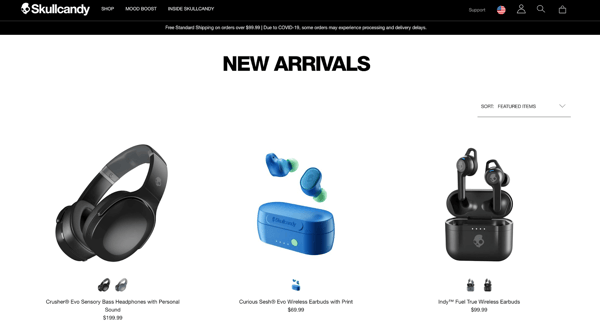
Another way for brands to forecast future sales with product analytics is in product development. Skullcandy uses predictive analysis that allows them to see return rates for products they haven't even developed yet. With those insights, they can decide which projects will end up on their new arrivals page and which ones won't get past the idea stage.
Measure Your Marketing Efforts
In 2019, US companies spent more than $227 billion on advertising.
Was it money well spent? That’s something analytics can help you determine.
By examining different marketing and ecommerce conversion metrics, you can find out:
- Which campaigns are bringing in new acquisitions?
- How many customers are spending as a result of different campaigns?
- How much revenue is generated by a specific campaign (otherwise known as return on ad spend, or ROAS)?
- Whether your ads are reaching the right audience, by monitoring clicks, engagement time, promotion effectiveness, and other metrics.
By continuing to monitor marketing performance metrics, you can ensure your brand’s marketing spend is actually resulting in more revenue, and not just wasted time and money.
Optimize Product Pricing
The average net profit margin for online retailers is just 4.57%. That’s why so many ecommerce brands struggle to price their products. In the uber-competitive digital age, prices need to be within the same ballpark as other sellers. But maintaining as much of a profit margin as possible is also essential to the success of your business. Instead of guessing, smart brands use analytics to help them decide. Predictive analytics, in particular, can help show pricing trends that may be coming, and help retailers choose prices that balance competitiveness and profit.
Personalize Your Customer Experience
Research by LawnStarter shows that 90% of customers prefer working with companies that personalize customer service, which makes personalization a key differentiator in today’s crowded ecommerce market.
Ecommerce analytics allow you to predict the needs of individual consumers and structure your site based on your customers' preferences rather than on what everyone else in your industry is doing.
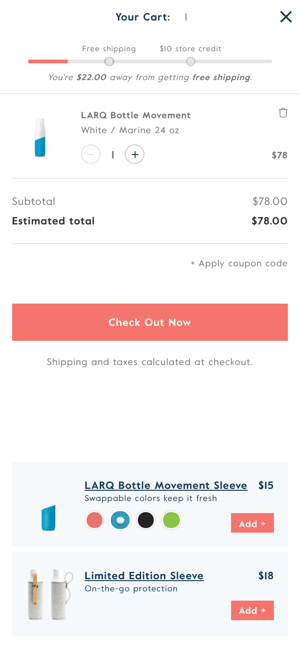
Analytics also allows you to set up recommender systems, which provide personalized recommendations to people browsing your store. For example, when LARQ's customers add a bottle to their shopping cart, their site uses that data to make relevant recommendations about bottle sleeves. This sort of personalization can help you encourage existing customers to keep coming back.
Conclusion
Ecommerce analytics can take time to accumulate before you can start seeing the real benefit, but they're critical to running a successful business and worth the wait. Without analytics, you're making decisions based on gut feelings or what works for other people. By measuring and analyzing data, you can see exactly what works for your business and do more of it, helping your business grow.
In the beginning, take advantage of free tools, like Google Analytics and Enhanced Ecommerce. Once you grow your business, consider more advanced analytics software that centralizes all of your data in one place. By taking advantage of free ecommerce tools and moving to paid programs when needed, you can see the big picture and all the details that can optimize user experiences and profits.
You'll also be able to relieve a bit of stress when you make business decisions. You won't be throwing ideas at a wall and seeing what sticks. You will have data to back up your decision-making and give you better odds of ecommerce success.
It’s not magic. It’s just analytics.
